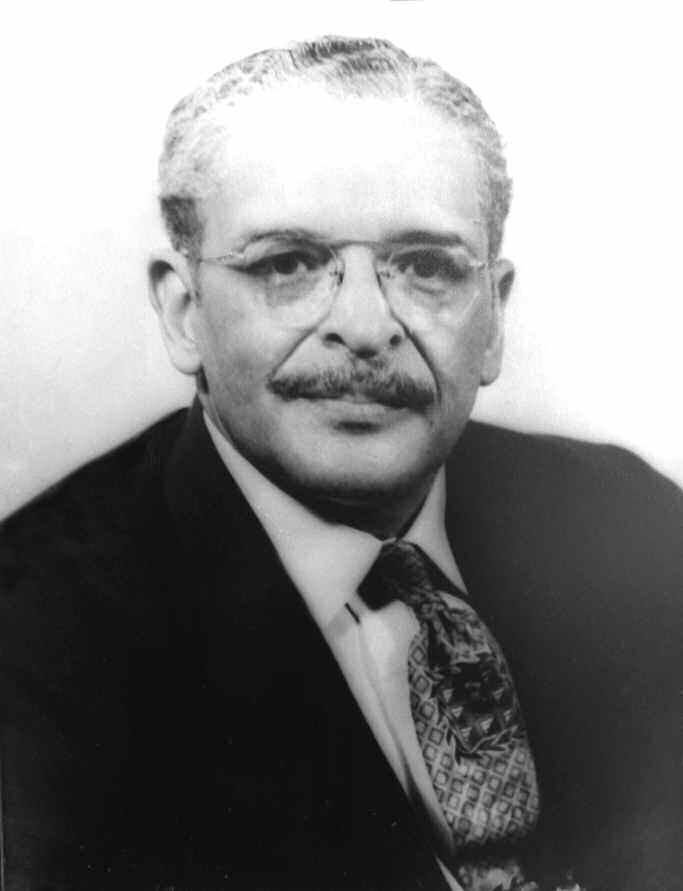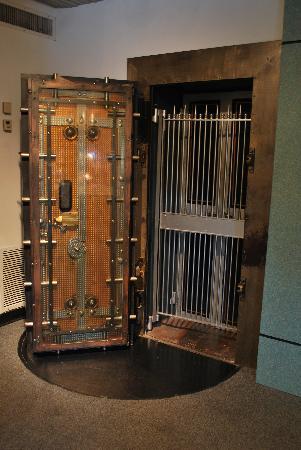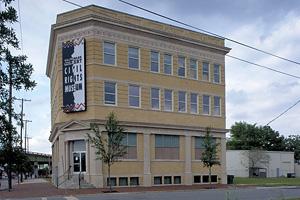Celebrated as “Georgia’s Official Civil Rights Museum”, the Ralph Mark Gilbert Civil Rights Museum is located at 460 Martin Luther King, Jr. Boulevard in Savannah, Georgia. Opening in 1996, the museum is named in honor of Rev. Dr. Ralph Mark Gilbert, pastor of the First African Baptist Church from 1939 until his passing in 1956. He led the church, located at 23 Montgomery Street in Franklin Square of Savannah’s Historic District, for sixteen years.
An alumnus of the University of Michigan, Rev. Dr. Ralph Mark Gilbert, an orator and playwright, was celebrated throughout the United States. He, with neighborhood churches and Alpha Kappa Alpha (a Black sorority), developed Greenbrier Children’s Center. Also, with assistance from Black and White supporters, he established the West Broad Street branch of the Young Men’s Christian Association (YMCA).
Perhaps what he is most recognized for in his mission of community outreach is his work in improving, socially and politically, the lives of African-Americans.
As a Black minister, Gilbert was a strong advocate for civil rights for African-Americans. An active supporter of the National Association for the Advancement of Colored People (NAACP), in 1942, he became president of the organization’s Savannah branch. During his tenure, Gilbert restructured his branch. As president of the Citizens Democratic Club, he, in challenging the all-White primary of Georgia, launched a Black voter registration drive. He was highly successful in registering hundreds of African-Americans in Georgia to vote.
He aided in the creation of a more liberal city council and the mayoral election of John G. Kennedy, a progressive White, Democratic politician. Gilbert supported the “Original Nine”, the first Blacks hired, in 1947, as officers with the Savannah Police Department. Serving in the local executive position of the NAACP for the next eight years, he organized and convened the civil rights association’s first state conference for Georgia. By 1950, Gilbert’s guidance led to the development of more than forty local branches of the NAACP in Georgia.

(No copyright infringement intended).
The purpose for the Ralph Mark Gilbert Civil Rights Museum was to commemorate the struggle for civil rights in Savannah. The creation of such a museum was led primarily by W.W. Law, an African-American who became president, after Gilbert, of the Savanah branch of the NAACP in 1950. According to the website of the museum, in 1993, Law “sought $1 million in funding from Chatham County’s one-cent special local-option sales tax to build the museum. He chose the old Wage Earners Savings and Loan Bank on Martin Luther King, Jr. Boulevard (formerly West Broad Street) as the museum’s site. West Broad Street was the hub of Black businesses, medical doctors, mortuaries, various other professionals, jazz music, and other entertainment. The bank was also near the Bolton Street Baptist Church, where the first civil rights mass meetings were held in the late 1950s and into the 1960s. As a historic preservationist, Law envisioned the Ralph Mark Gilbert Civil Rights Museum as a catalyst for reviving the economic and cultural vitality of old West Broad Street.”
In 1993, Law, as president of the Savannah Yamacraw Chapter of the Association for the Study of African American Life and History (ASALH), established the Ralph Mark Gilbert Civil Rights Museum. The letters and papers of Ralph Mark Gilbert were donated to the museum by his widow, Elorie S. Gilbert. Renovation of the past bank building also began in 1993. Although the design of the structure, which is located in the historic Savannah District, is contemporary, its selection to house the civil rights museum was paramount due to the building’s significance in Savannah’s African-American history.
The site of the Ralph Mark Gilbert Civil Rights Museum is the Wage Earners Savings and Loan Bank. Constructed in 1914, the African-American bank was established in 1900. Lucius E. Williams served as president of the prominent bank, which was built by Robert Pharrow, an African-American contractor from Atlanta, Georgia.
In the February 1927 issue of The Crisis, the journal of the NAACP, the immense success of the Wage Earners Savings and Loan Bank was lauded. In the journal, the authors detailed, “The Wage Earners Savings Bank of Savannah, Georgia, under the guidance of Lucius E. Williams, is the other institution which for many years exceeded every other Negro bank in deposits. It was the first bank of the race to have a million dollars on deposit and only the migration enabled the two Chicago institutions (Binga State Bank, established in 1908, and Douglas National Bank, established in 1922) to snatch its leadership. The Wage Earners with depositors in almost every state has probably helped more Negro business ventures to success than any other Negro bank.”
The building also served as the site of the Guaranty Insurance Company. This Black-owned insurance company was co-founded and headed by Walter Sanford Scott (1877-1961), whose business acumen led him to become a millionaire. Having served as the president of the Guaranty Insurance Company for more than fifty years, he was also a highly successful banker, entrepreneur and philanthropist. His original tie to the building is that, in 1902, Scott acted as the secretary and treasurer of Wage Earners Savings and Loan Bank.

(No copyright infringment intended).
A 1895 graduate of Tuskegee Institute, Walter Sanford Scott readily applied the teachings of orator, author, educator and advisor to United States presidents, Booker T. Washington, the founder and president of the historic Black college. Scott later held various positions, including vice-president of the National Negro Bankers Association and, appointed by the governor of Georgia, as the director of the YMCA.
In The National Cyclopedia of the Colored Race, Volume I, edited by Clement Richardson and published in 1919, a profile on Scott was featured. It was written that Walter Sanford Scott was “…an apostle of the doctrine, ‘Cast down your bucket where you are’… in 1906, the Royal Undertaking Company, a firm that has long since become established, is one of the big Negro businesses of Savannah. Mr. Scott was made treasurer … in 1913, he was elected President of the Mutual Health Insurance Company … 1914, he was elevated to the Presidency of the Royal Undertaking Company … Mr. Scott organized the Savannah Savings and Real Estate Corporation. Of this, he was made President in 1915.” In this text, it was also noted that “Savannah … is now perhaps the leading city of the world for successful Negro Insurance Companies.”
Thus, the building has ties integral to the social, economic, political and physical advancement of Black people in Georgia, especially, Savannah, the oldest African-American community in the southern state.

(No copyright infringment intended).
Visitors to the Ralph Mark Gilbert Civil Rights Museum can experience exhibits on all three floors of its building. On the first floor, a bronze bust of Rev. Dr. Ralph Mark Gilbert is prominently displayed. Also, on that floor is a setting designed to look like the Azalea Room of Levy’s Department Store. At the segregated department store, Blacks could purchase clothing but not dine in its restaurant. On the mezzanine is a theatre, which is designed to resemble the church sanctuary, that features the reflections of W.W. Law and other civil rights activists of Savannah.
There are historic, photographic and interactive exhibits that chronicle the battle for civil rights, locally and state-wide. A fiber-optic map that contains eighty-seven locations significant to the development of civil rights is highlighted. Also onsite is a lunch counter where sit-ins occurred.
The exhibit on the organization of the National Association for the Advancement of Colored People, specifically the Savannah branch, is most appropriate, as the museum building was also the past headquarters of the Savannah branch of the NAACP.
The second floor of the museum features lecture halls, classrooms and meeting spaces. There is, according to the museum’s website, also “a video/reading room, an African-American book collection for children and a gift shop.”
The museum is available for visits, Tuesday through Saturday, from 10am to 5pm. Independent and group tours, including educational group tours, are available. Since its opening, thousands of guests, of all races and ages, have visited the Ralph Mark Gilbert Civil Rights Museum to learn more about the battle for African-American civil rights.
